Meeting the Shaman in Siberia
Printed in the Winter 2017issue of Quest magazine.
Citation: Gilchrist, Cherry, "Meeting the Shaman in Siberia" Quest 105.1 (Winter 2017): pg. 10-15
By Cherry Gilchrist
 The first beats of the shaman’s drum were resounding, starting slowly but quickly mounting in intensity. Then there was the sudden sound roar of a helicopter overhead, completely obliterating the sound I was listening to. I clicked on the pause button, and peered out of the window. A large army helicopter was circling right above me, barely skimming the rooftops of my city home. Its presence felt incongruous, and menacing. But was it? Had I perhaps inadvertently invoked a shamanic presence as I played the recording of the ritual in my study? After all, it is said that shamans can fly.
The first beats of the shaman’s drum were resounding, starting slowly but quickly mounting in intensity. Then there was the sudden sound roar of a helicopter overhead, completely obliterating the sound I was listening to. I clicked on the pause button, and peered out of the window. A large army helicopter was circling right above me, barely skimming the rooftops of my city home. Its presence felt incongruous, and menacing. But was it? Had I perhaps inadvertently invoked a shamanic presence as I played the recording of the ritual in my study? After all, it is said that shamans can fly.
This particular recording was of a ritual that took place twelve years earlier, in 2004, in the far-off province of Tuva, Siberia. It was a consultation I had there with Herel, a local shaman. In fact, this was the first time I had ever played back the recording. I couldn’t bring myself to do so earlier—it might have seemed artificial and diluted the experience while the power of that occasion still burned bright in my mind. But now the time was right, and I was ready to listen and reflect. When the helicopter finally departed, as quickly as it had come, I immersed myself again in the drum beats and chanting. I sensed that I was sliding into a different world, eerie and disorientating in one way, but a place where reflection and calmness were also possible. However, the visceral sound of the helicopter remained imprinted on my senses, a reminder that this meeting with the shaman had been a powerful experience, and one that, perhaps, was not quite over yet.
My own spiritual path has led me deep into the heart of the Western Hermetic tradition—in particular Tree of Life Kabbalah, alchemy, Tarot, and astrology. At the time of my trip to Siberia, I was certainly interested in shamanism, but in a cautious, anthropologically orientated way. I was wary of the contemporary enthusiasm for taking up shamanism. This provoked questions for me: is it possible to practice it in a modern Western context? Does it require its own traditional culture, for authenticity and indeed safety? Many serious studies emphasize how much sacrifice is required from true shamans. Physical ordeals, renunciation of normal life, and exhausting, risky encounters with the spirits are part of the job description, in the efforts to help and heal others.
In a traditional context too, the shamanic path is not one that you can choose on a whim. Usually the shaman shows signs of his or her potential destiny from childhood. Having a parent or relative may predispose one to be a shaman, but this is not guaranteed. Herel told me that although both he and his wife were shamans, only one out of their five children was possibly a shaman in the making. The signs were there at her birth, as the weather changed dramatically, from thunder and lightning to sunshine and then snow. The heavens were pointing a finger to her ability, which was now manifesting in later childhood through significant dreams and encounters with spirits.
I came to Siberia seeking answers to my questions about shamanism: can it be practiced, or truly experienced, by anyone not of that traditional culture? I had no doubts about its power, only whether it could survive in a modern world without losing its identity as a genuine spiritual practice. By 2004 I had visited Russia nearly sixty times. I ran a Russian arts and crafts business; I had studied Russian traditional folk culture, learnt the language, and mixed freely with people in cities and countryside. But I was keen to find an even older culture, to witness practices which go back thousands of years, and which may be the source from which much Russian folk tradition itself has evolved. Siberia has a living, truly ancient culture; the majority of its people are ethnically different from Russians, and its primary religions are shamanism and Buddhism.
I travelled with my writer friend Lyn, visiting the fabled lands of Tuva and Khakassia, along with the Sayani mountains. Our trip was an organized journey of exploration with a small group of Russian travelers. We went in the warm summer months, when the forests were in full leaf and mountain pastures were studded with alpine flowers. We traversed landscapes that had remained largely untouched since the Bronze Age, including sweeping grasslands studded with standing stones and stone circles, like an airbrushed version of the Wiltshire plains in England. In Khakassia, we saw Bronze Age carvings and pictograms on rocks still relevant to the customs of local people today—of the magic elk, for instance, who they say leads souls to the underworld. Shrines set up to spirits of the land were abundant, and ancient ceremonies of purification and healing were still carried out at important ritual points in the landscape. This was the landscape of shamanism in southern Siberia, which, as far its people are concerned, is still a spiritual, magical terrain.
When we arrived in Kyzyl, the capital of Tuva, we were put up at a nearby yurt camp and then taken into the town itself. Here there is a monument that, allegedly, marks the center of Asia. It is also home to the shamans’ “clinic.” This is where approved and regulated shamans are allowed to practice. It might sound contrary to the spirit of shamanism, with its allegiance to nature, to fires and skies and a freedom of movement. However, Tuvan shamanism is in recovery after brutal suppression by the Soviet regime: many shamans throughout the whole of Siberia were murdered or dispossessed. In that era, some were even thrown out of airplanes with the cruel taunt: “You shamans say you can fly! Let’s see you do it, then.” The tradition was severely depleted, but it was not lost, and it is making a strong comeback. To a certain extent, though, it still has to work in cooperation with the authorities, hence the clinic setup. And these shamans certainly practice outdoors as well. They have special gatherings at sacred mountain sites, and as we shall see, our shaman Herel came to our yurt camp with his wife the following evening to perform a ceremony of blessing.
The Consultation
From listening to the recording, from my notes written at the time, and from the vivid recollections that I still carry, I now offer an account of the session with Herel, the Tuvan shaman.
So now our group sits in Herel’s consulting room, which is filled with feathers, ribbons, ropes, bones, plaques, a reindeer head, a horn, and bells. They hang from his walls, a chaotic clutter of ritual paraphernalia, rather in the way that strips of cloth or leather hang from the traditional shamanic costume itself. He shows us some of the tools of his trade, and how they work. His is a hard calling, he admits. His own speciality is purification and divination, whereas his wife specializes in healing women’s ailments.
At the end of the talk, he asks if anyone would like to have a personal session with him. I alone say yes. I’ll pay the price he asks—higher for visitors than for locals, I’m sure, but he has to make a living, and I don’t begrudge it. Later Ira, our young guide, tells me that from all the groups she has brought to this place, I am the only person who has ever opted for a private consultation. This surprises me. She adds that Herel is the very best of the shamans she has encountered, and a man of compassion; some seem aggressive, and the quality, she implies, is variable.
Lyn and Ira stay. Ira needs to translate for me. I speak good Russian, but Herel’s accent is thick and guttural, as it is probably his second language. Lyn makes a recording, her earlier BBC training coming in handy.
Herel dons an eagle headdress and tells me to sit on a bearskin in the center of the room. “Raise your hands,” he says, as he passes burning juniper around my body. “While appealing to the spirits, I’ll ask them to take your worries and bad feelings out of you, and I’ll ask them to make your future road happy.” He tells me to shut my eyes, and bids me not to be afraid. Let the tears come, he says. Tears often fall during an encounter with the spirits. And indeed they do. I am moved, and emotionally exposed during this session, though I am neither afraid nor unhappy. Herel dances around me, drumming and chanting, creating a kind of beehive of sound and movement around me. I feel that I am in a magical chamber, in a different dimension of space and reality.
The ritual is constantly changing. I have the impression that his chants and cries are a dialogue with the spirits, as they shift in tone and intensity. Phases of the session peak, and then fall away into silence. A new one is heralded by the blow of a conch shell, or jangling of bells. Suddenly, he thumps my shoulder with a bear paw—it’s a shock. Later, he pulls back my T-shirt and spits down the back of my neck. Curiously, I don’t mind this a bit. He even uses a whip on me several times, but it is never painful. I note later that this is “stimulating and pleasant,” rather like using a switch of birch leaves to beat your body in a Russian bath. At the end of each section, he blows away the psychic “debris” and sends it out of the door. I am in a different time zone, and have no sense of how long the treatment lasts, although Lyn tells me later that it is about fifteen minutes.
He mentioned at the start of the session that I have an obstruction in my left shoulder. “You are worrying about something. I’ll take it out of you.” Curiously, at this point I have had several years of problems with my right shoulder, and already recognize that it is probably stress-related. I can see now that if one side of the body is numb with some emotional weight or obstruction, then the other side may take the strain and display the symptoms. After the session, Herel says that he has succeeded in asking the spirits to relieve me of this. Next year, he tells me, will be more normal, and I will start to be happy again, after going through a little more personal suffering first.
We conclude with three pieces of advice. He tells me that I may come again next year, if I wish. But if I don’t, I can connect to him at a distance; he is able to sense people he has treated, and can help if needs be. He gives me a “spirit bag,” a little bundle of cloth tied up with cord, and tells me that I should feed it three times a week with oil or melted butter. It is my talisman, to connect me to the power of the session, and I should take it with me if I am traveling or away on business. He also advises me to contact the spirits of place where I live—the spirits of the hills, trees, and streams. After this session, he says, I will be able to do this. That’s if I have such spirits in my homeland. I will relate a little later how I took this advice.
The next day, Herel and his wife arrive at our yurt camp to conduct a ceremony to promote the well-being of everyone there. They come as the light begins to fade, preparing the space carefully, setting the fire and arranging little balls of dough to mark out the territory for the ritual. Once the fire is blazing, they don full costume and invite everyone to sit in a large circle. I am still bathed in my impressions from the day before, and the difference between the two occasions strikes me strongly. This one is open to all comers; it has resonance and power but not, to my mind, the concentrated force that I experienced in my session. Herel and his wife are dealing with a big mix of people, from earnest Japanese tourists to young Australian surfers, since the camp is used by various travelers passing through the area. Some of them have never even heard of shamanism and are nervous, or giggle loudly, at this unfamiliar ritual.
At one point, Herel passes around the backs of everyone in the circle, giving some of them a thump with his bear paw, though never as hard as he clouted me the day before. I wonder if they realize that they are actually being offered a precious nugget of healing, or blessing, or insight. I have a video of this ceremony, and even viewing it cold, a long time later, it is compelling, and there is an unearthly quality to the chanting and singing of the shaman pair. I do not know exactly what the sounds mean, though it certainly sounds at times as though they are in conversation with spirits.
One study of shamanism mentions that Tuvan shamans simulate bird and animal calls to express particular emotions: that of a raven to curse an enemy, a cow to call up rain, a wolf or eagle to frighten people, a magpie to uncover a lie, a bull to demonstrate power, and a bear to convey rapture. The horse has special properties in many branches of Siberian shamanism: it is a creature that can fly the shaman to the spirit world. The bear, hare, and eagle are also particularly important in Tuvan shamanism.
I suspect that the eagle is Herel’s own spirit guide, although—understandably—he refuses to tell us what kind of creature it is. During my individual session with him, I “saw” an eagle.
My notes say: “Just the head, neck, and shoulders were visible. It was quite clear and communicating with me—intelligent.”
When the ceremony ends, the mood is peaceful. The daylight has not quite gone, and unexpectedly the sky brightens. I look up to see a cloud in the shape of an eagle just overhead. Am I imagining it? No, it is there when I look on the video later. Curiously enough, this video will give me a lot of trouble; I discover that the original minitapes are jammed, and only after various professional companies refuse to try and repair them do I find one local man who is prepared to have a go. Luckily, he succeeds in transferring the whole recording to DVD. As I said at the beginning, strange things do happen when shamanic forces are in action.
On a lighter note, after the evening’s ceremony is over, I pick up some of the balls of dough used by the shamans, and take them back as souvenirs to the yurt that Lyn and I are sharing. I hang them in a cloth bag from the end of my bed, for want of anywhere better to put them. That night I sleep peacefully. Lyn, however, is awake for hours, disturbed by the sound of a mouse that has detected the presence of tasty tidbits and is trying all kinds of ways to reach the prize. Scuttlings, rustlings, and chewings ruin her night’s sleep. The next morning, when we relate this lightheartedly to one of our Russian fellow travelers, he takes it very seriously. “No, that was not a mouse!” he pronounces solemnly. “That was a rival shaman come to steal the power of our shaman.” A little far-fetched, perhaps? But then if I am claiming that an army helicopter might be a shaman in disguise, perhaps my ideas are no stranger than his.
The Aftermath
How did I respond to the instructions that Herel gave me? And did my perspective on shamanism change after this visit?
In the months following our trip, I thought about the session a great deal. I took good care of the spirit bundle, and hung it in a prominent place in my home, where it seemed to act as a focus for various difficult aspects of my past, helping to dispel them. This had the effect of lightening the load, as Herel predicted. It may also have triggered a cleansing and regeneration of connections to my ancestral heritage as well. Back in 2000, a difficult time for me after the breakup of my marriage, I had a disturbing, spontaneous impression of a dark procession of shadowy, malevolent figures, a troupe of people passing through me. My sense was that they came from the far past, before my own lifetime, and that I had some personal connection to them. Then, in 2004, a week or two after the shaman’s session, I wrote in my diary: “Woke up 5 a.m. after seven hours solid sleep, with an impression of my relatives and ancestors at my right shoulder, flowing out of it in a wavy shape like a kind of stream. A warm and light quality to it. Does the shamanism put you in touch with your ancestors?”
Now I would say that it can indeed help to do that. For me, I think this second waking vision was linked to Herel’s purifying of my past—oddly enough, the first “dark” vision had also occurred while I was visiting Russia. It seemed to be the trigger for an intense phase of family history research, which included not only getting to know some of the characters from my family tree, but also putting me in touch with living descendants, cousins whose existence I was unaware of. From that time on, my family has been reconfigured in a profound sense, and perhaps this was activated by the treatment I received from Herel. Shamans are closely linked to the world of the ancestors, something that we take little note of in the West as a general rule, but which can be of great significance in our lives. My own book Growing Your Family Tree makes this point.
But to return to the spirit bag itself, I soon found that pouring melted butter into pieces of cloth has a very smelly outcome, so I abandoned this practice after six months or so. I relegated the spirit bundle to a special drawer as a treasured memento rather than an active force. I did not want to be dependent on talismans, but I valued what this had brought me. The same went for contact with Herel. The contact I had has continued to serve me, and remains vivid; I am grateful for it, but have a path to travel which does not include making an inner bond with a distant master.
The spirits of place were both more promising and more of a challenge. I was living then in Bath, in England, and every morning for several months, I walked the local hills and fields on the edge of the town. It seemed hard to arouse these spirits, perhaps because the landscape itself felt tired. I had not been aware of this before, but it would not be surprising, since Bath has been tramped over by many peoples, and its resources have been pressed into service for pleasure, healing, and greedy enterprise. But the exercise has left me more aware of the energies and spirits of landscape ever since.
The landscape we visited, in which Siberian shamanism is embedded, also played a strong part in renewing my own sense of nature and its powers. Like many of us, I suspect, I was deeply immersed in nature as a child, but found that this receded as I entered adolescence. I even remember realizing that this was happening, and feeling sad that I would soon no longer have that same passionate connection to the natural world. In our culture, unlike that of Tuva and Khakassia, we have few official signposts to help us keep this into adult life. But wherever we went in that region, there were shrines to the spirits—gaunt branches held upright by clusters of stones, and adorned with rags and ribbons. Here people leave offerings and make prayers and wishes. This experience helped me, I believe, to strip back some of the adult veneer, and reinforce my earlier, instinctive connection with landscape.
As is often the way, my initial questions about shamanism gave way to a different perspective on it. My trip to Siberia, rather than achieving solid answers, showed me that shamanism is a living tradition that cannot be completely pinned down. It is in essence a shape-shifter, and will ebb and flow, finding different forms in different cultures. This does not mean that every manifestation of it is equally fruitful. Some attempts to practice it in a Western context may turn out to be misguided, and traditional shamans “performing” for visitors may degrade their power. But experimenting is part of the risk that we collectively take to keep shamanism alive. It is something that we have vital need of in our modern world, and can perhaps help with crises of faith as well as with our planetary ecological problems. Shamanism embodies an awareness that life is interconnected, and that we are a part of this too; it shows us how we can work dynamically within this relationship. It acknowledges the role of spirituality, and does not replace or undermine any particular belief in one ultimate God or Spirit.
Shamanism, which may be the world’s oldest and most widespread religion, is now meeting the bigger world again, and in many places on earth, people are eager to learn what shamanism has to offer. I have come to realize that such a development is more important than an anxiety about inappropriate use of shamanism in other cultures, or the blurring of boundaries and nomenclature in academic studies. As Tim Hodgkinson, anthropologist and musician, says in his excellent paper Transcultural Collisions: Music and Shamanism, shamanism is itself improvisatory. It deals with the circumstances as they are; it responds to very particular configurations of place and time. And each of us may discover something different within its practice. Meeting the shaman gave me not just insight into the tradition itself, but a very specific outcome: it invigorated three of my major passions: the power of music and sound, the power of nature, and the world of ancestry.
Sources
Dioszegi, V., and M. Hoppal, eds. Shamanism in Siberia. Budapest: Akademiai Kiado, 1978.
Gilchrist, Cherry. Russian Magic: Living Folk Traditions in an Enchanted Landscape. Wheaton: Quest, 2009.
Halifax, Joan. Shamanic Voices: The Shaman as Seer, Poet, and Healer. New York: E.P. Dutton, 1978.
Hodgkinson, Tim. Transcultural Collisions: Music and Shamanism in Siberia. Paper given at the School of Oriental and African Studies, London, 2007; https://www.academia.edu/3356244/Transcultural_Collisions; accessed Sept. 30, 2016.
Stutley, Margaret. Shamanism: An Introduction. London: Routledge, 2003.
Vitebsky, Piers. The Shaman: Voyages of the Soul. London: Duncan Baird, 1995.
The Elements of Shamanism
By Cherry Gilchrist
Our concept of shamanism has shifted over the last half century. Some decades back, anthropologists held that only Siberian traditions were worthy to be called shamanic; now the definition has broadened considerably, and it is recognized that there are historic shamanic practices across the globe. Shamanism may in fact be the earliest known religion of humankind. It has certain common characteristics in different areas, although individual detail and emphases vary across the range of different peoples. Even within Siberia, for instance, distinctive shamanic practices are found among the individual peoples of the land, such as the Buriat, Evenk, and Tungu cultures. But it is also possible to identify certain common features among different branches of shamanism. Here are some of the most prominent.
Shamanism is intimately connected with landscape. The landscape itself is considered sacred, and specific geographical features may be seen as opening points into another world of spirits. A particular mountain, cave, or spring, for instance, might be understood as the local entrance to the spirit realm, not so much as a literal fact as a door that one can pass through when in an altered state of consciousness or trance. It is usually the shaman who enacts these possibilities of moving between worlds, and he or she does so on behalf of the community, or of a particular individual who is seeking help.
The cosmos in traditional shamanic cultures is usually seen as tripartite, with divisions representing the Underworld, the world of Earth, and the world of Sky or Heaven. Human beings too are considered to have three different levels: of body, soul, and spirit.
The shaman, as the person who moves between these realms, is in communion with the realms of nature, spirits, and the ancestors. (The actual hierarchical structure of these may be complex, and varies between different shamanic belief systems.) He or she is likely to go into a trance state, and will sometimes climb a ladder or tree representing the connection between heaven and earth. Often a bird or animal acts as a spirit guide to conduct the shaman to the otherworld. Eagle, bear, and horse are prime candidates for this. Dialogue is possible with spirits and ancestors, and the shaman may be able to divine or prophesy from such conversations. The shaman may also beseech the spirits to intercede in human life, to heal, to purify, or to avert or lighten troubles. Drumming, chanting, and dancing are usually part of the ritual, along with various kinds of distinctive sounds made by bells, pieces of metal, or a conch shell. The drum itself is sacred, and may be inscribed with symbolic glyphs and drawings.
The rites of shamanism require that a sacred space be set up, whether in a so-called clinic or at a chosen natural place, in the forest or mountains, for instance. Bounded areas are thus set up as ritual spaces, and elements of earth, water, fire, and air are usually prominent in ritual. For example, picking out details from the two rituals that I participated in, the dough balls represented earth, the spittle was water, the fire manifested in the bonfire, and the air was the swishing of feathers and the blowing away of debris.
Shamans are usually highly valued as part of the community, but they may also be atypical in some way, for instance bisexual. Shamanism is a calling rather than a choice of occupation, one which the budding shaman may resist only to find that he or she falls ill until the call is heeded.
There may be a particular pantheon of gods or hierarchy of spirits associated with a specific branch of shamanism. However, shamanic practice allows for a strong element of individual interpretation and improvisation within these frameworks. As shamanism involves a living dialogue with forces that rule and influence our lives, so spontaneous responses, sensitive to the nature of each session, are needed. The shaman must have quick wits and a readiness to embrace the unexpected.
Cherry Gilchrist is the author of a number of books on spiritual and cultural traditions, such as Tarot Triumphs: Using the Tarot Triumphs for Divination and Inspiration; Russian Magic; Alchemy: The Great Work; and (with Gila Zur) The Tree of Life Oracle. She has studied Kabbalah and astrology, and was a founding member of Saros, the Foundation for the Perpetuation of Knowledge. Cherry lives Devon, U.K., and teaches part-time for the University of Exeter. Her website is www.cherrygilchrist.co.uk


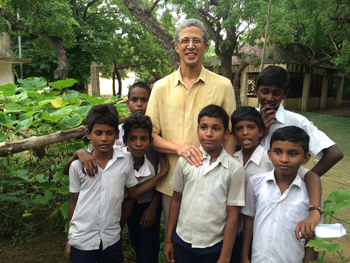
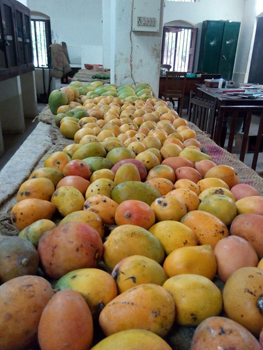
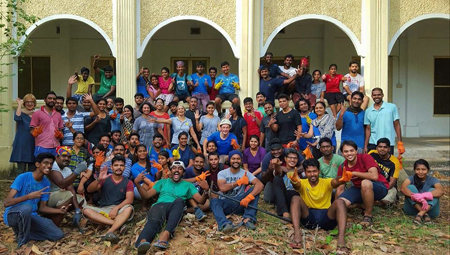
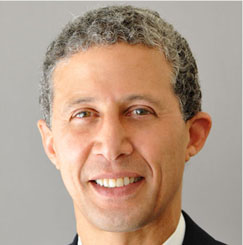 During the lifetime of Joy Mills, and particularly in her later years, she frequently would focus on one particular question: “What does it mean to be fully human?” The answer seems obvious until you actually have to think about it. Clearly it involves more than merely standing on two legs and thinking. In The Secret Doctrine, H.P. Blavatsky says that the human results from the coming together of three evolutionary streams, “the Monadic (or Spiritual), the Intellectual, and the Physical Evolutions.” She goes on to say that “each of these three systems has its own laws, and is ruled and guided by different sets of the highest Dhyanis . . . Each is represented in the constitution of Man . . . and it is the union of these three streams in him, which makes him the complex being he now is.”
During the lifetime of Joy Mills, and particularly in her later years, she frequently would focus on one particular question: “What does it mean to be fully human?” The answer seems obvious until you actually have to think about it. Clearly it involves more than merely standing on two legs and thinking. In The Secret Doctrine, H.P. Blavatsky says that the human results from the coming together of three evolutionary streams, “the Monadic (or Spiritual), the Intellectual, and the Physical Evolutions.” She goes on to say that “each of these three systems has its own laws, and is ruled and guided by different sets of the highest Dhyanis . . . Each is represented in the constitution of Man . . . and it is the union of these three streams in him, which makes him the complex being he now is.”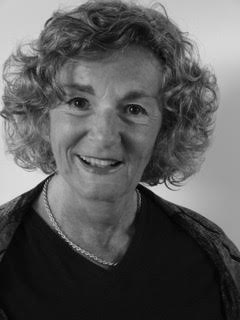 As with physical needs, it is essential that we understand the emotional, mental, and spiritual needs of the dying individual in order to be of assistance. To understand these needs, expressed or unexpressed, it is helpful to consider what is known of the actual experiences of the dying. Awareness of these will help us to feel more comfortable in their presence and also to communicate more helpfully, making the entire experience less intimidating.
As with physical needs, it is essential that we understand the emotional, mental, and spiritual needs of the dying individual in order to be of assistance. To understand these needs, expressed or unexpressed, it is helpful to consider what is known of the actual experiences of the dying. Awareness of these will help us to feel more comfortable in their presence and also to communicate more helpfully, making the entire experience less intimidating.